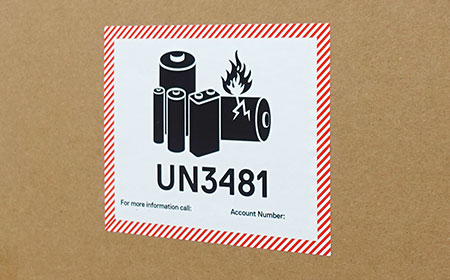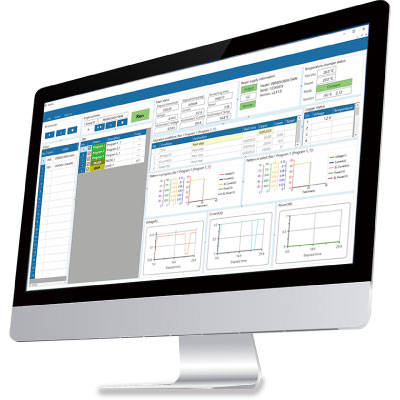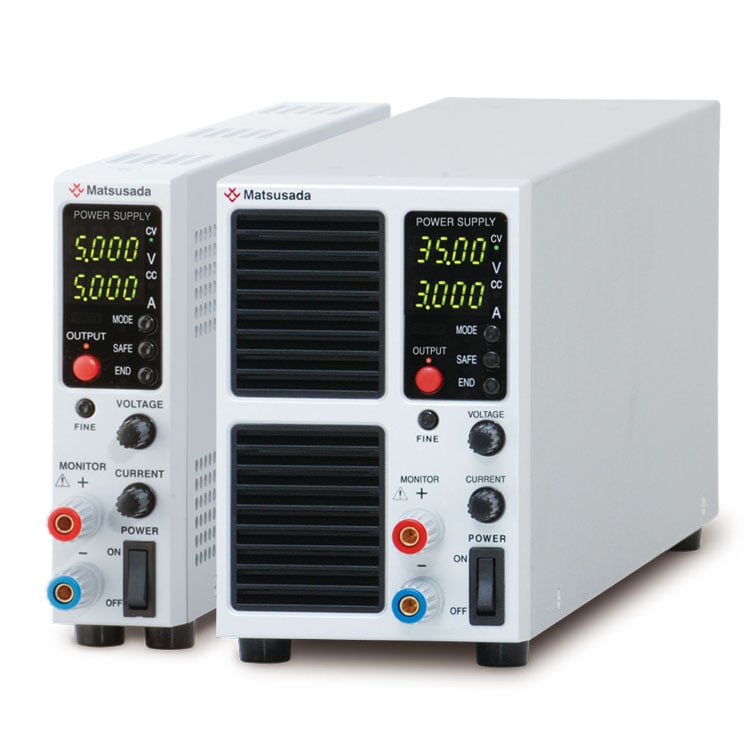In recent years, the use of lithium-ion batteries has grown exponentially with the widespread adoption of electric vehicles (EVs), energy storage systems, and mobile devices. However, safety remains a critical concern. This is evident from incidents reported by Japan's National Institute of Technology and Evaluation, such as fires caused by recalled portable battery packs. Given these safety risks, proper precautions are essential.
This article explores lithium-ion battery safety standards testing and highlights the Matsusada Precision products used in these tests. For detailed information about test standards, including their scope of application and specific criteria, please refer to the latest version of the standards documentation. This article is a translation of a Japanese column.

What Are Battery Safety Standards?
Let's first examine how battery safety standards are established.
Multiple Safety Standards for Different Applications
Battery safety standards vary widely because batteries must meet different performance requirements depending on their application and operating environment. These standards are designed to address all possible usage scenarios and are divided into two main categories: "performance verification" and "safety verification," each with specific design requirements and testing protocols.
Battery applications are typically classified into three categories: consumer electronics (portable devices and handheld equipment), industrial applications, and automotive use (EVs). Each category has its own set of specific standards.
Battery Safety Standards
Below are the primary battery standards established in Japan, organized by their Japanese Industrial Standards (JIS) numbers.
| JIS Number | Standard Title |
|---|---|
| JIS C8711 | Secondary cells and batteries containing alkaline or other non-acid electrolytes-Secondary lithium cells and batteries for portable applications |
| JIS C8712(JIS C 62133) | Safety requirements for portable sealed secondary cells, and for batteries made from them, for use in portable applications |
| JIS C8713 | Secondary cells and batteries containing alkaline or other non-acid electrolytes−Mechanical tests for sealed portable secondary cells and batteries |
| JIS C8714 | Safety tests for portable Lithium Ion secondary cells and batteries for use in portable electronic applications |
| JIS C8715-1 | Secondary lithium cells and batteries for use in industrial applications- Part 1: Tests and requirements of performance |
| JIS C8715-2 | Secondary lithium cells and batteries for use in industrial applications- Part 2: Tests and requirements of safety |
JIS C8711: Lithium Secondary Batteries for Portable Applications
JIS C8711 establishes criteria for evaluating the performance of lithium secondary batteries used in portable devices. This standard is based on IEC 61960, an international standard introduced in 2017, and primarily focuses on testing protocols for verifying the electrical performance characteristics of batteries.
JIS C8712: Safety of Sealed Small Secondary Batteries
JIS C8712 specifies safety requirements and testing methods for sealed small secondary batteries used in portable devices. It covers both normal operation and foreseeable misuse scenarios. This standard was developed based on the international standard IEC 62133 and includes detailed specifications for safety-related design features and testing procedures.
Note: JIS C8712 was superseded by JIS C 62133 in 2020 and is no longer in effect.
JIS C8713: Mechanical Testing Methods for Sealed Small Secondary Batteries
JIS C8713 establishes standardized methods for evaluating the mechanical properties of sealed small secondary batteries. Based on the international standard IEC 61959, it primarily focuses on protocols for vibration testing and free-fall drop testing.
JIS C8714: Safety Testing for Lithium-ion Cells and Battery Packs in Portable Electronic Devices
JIS C8714 outlines safety testing procedures for lithium-ion batteries used in portable electronic devices. This standard introduces more rigorous versions of certain tests specified in JIS C8712, including crush testing and external short-circuit testing. Compliance with JIS C8714 requires adherence to both JIS C8712 and its additional testing requirements.
JIS C8715-1: Industrial Lithium Secondary Cells and Battery Systems - Part 1: Performance Requirements
JIS C8715-1 specifies performance and labeling requirements for industrial lithium secondary batteries, including those used in stationary applications. Based on the international standard IEC 62620, it defines criteria for battery identification (such as type, polarity, and rated capacity) and establishes testing protocols for performance verification, including discharge performance, high-rate discharge capabilities, and internal resistance measurements.
JIS C8715-2: Industrial Lithium Secondary Cells and Battery Systems - Part 2: Safety Requirements
JIS C8715-2 establishes safety requirements for industrial lithium secondary batteries, including those used in stationary applications. Based on the international standard IEC 62619, it outlines design guidelines for safe battery operation, covering wiring specifications and management systems for temperature, voltage, and current.
The standard also defines protocols for product safety testing, such as external short-circuit, impact, and overcharge tests. Additionally, it includes functional safety testing requirements, such as overcharge voltage control and thermal management systems.
Note: In Japan, when specific JIS or IEC standards exist for particular battery applications, those application-specific standards take precedence over JIS C8715-2.
Battery Safety and Performance Testing
As outlined above, batteries are subject to multiple safety standards that define specific design requirements and testing protocols. Among these, safety standards testing plays a critical role in ensuring battery safety. Let's examine the nature of these safety tests in more detail.
Comprehensive Battery Safety Testing
Safety testing aims to verify that batteries remain safe under all conditions, including external disturbances, unexpected failures, and potential misuse scenarios. Manufacturers must perform and pass a wide range of prescribed tests to meet these stringent requirements.
While the focus above has been on JIS standards, batteries may also need to comply with various international lithium-ion battery safety standards, such as UL2580, UL2271, SAE J2464, SBA S1101, UN 38.3, and KMVSS. Furthermore, testing standards and criteria differ between single cells and battery packs, making it essential to account for these distinctions when planning safety testing protocols.
Electrical Performance and Safety Standards Testing
This section examines various electrical performance and safety tests and their requirements. All tests must be conducted in specialized safety chambers designed to contain potential fires or explosions, with camera monitoring systems for observation. Additionally, tests must be performed under specified ambient temperature conditions.
Note: This article is primarily based on JIS C8715 standards.
| Test Type | Safety Requirements |
|---|---|
| External Short Circuit Test | The battery must not ignite or rupture when subjected to external short circuits that could occur during misuse. |
| Forced Internal Short Circuit Test | The battery must not ignite or rupture when internal short circuits occur due to foreign material contamination. |
| Overcharge Test | The battery must not ignite or rupture when subjected to extended charging beyond rated capacity. |
| Forced Discharge Test | The battery must not ignite or rupture when subjected to reverse polarity charging. |
| Cycle Life Test | The battery must maintain a minimum specified capacity after repeated charge-discharge cycles. |
| Crush Test | The battery must not ignite or rupture when subjected to physical deformation under pressure. |
External Short Circuit Test
The external short circuit test simulates a short circuit by connecting the battery terminals through a low-resistance pathway. This test verifies that the battery does not ignite or rupture due to excessive heat generation caused by an external short circuit during misuse. Test specifications vary by standard, with short-circuit resistance requirements ranging from ≤5mΩ to ≤0.1Ω and different ambient temperature conditions specified for each standard.
Forced Internal Short Circuit Test
The forced internal short circuit test involves deliberately creating an internal short circuit by inserting a nickel particle into the battery and applying pressure. This test ensures the battery remains safe without ignition when internal short circuits occur, typically due to contamination from foreign materials.
Overcharge Test
The overcharge test evaluates battery safety by charging it at the maximum current rating of the battery system. This test ensures that prolonged charging beyond specified limits does not result in fire or explosion. According to JIS C8715-2, this test may be waived if the battery system includes two or more independent protection mechanisms or charging voltage controls. Charging current specifications vary between standards.
Forced Discharge Test
The forced discharge test assesses battery behavior under reverse polarity charging conditions. It verifies that the battery remains safe-without fire or explosion-when subjected to forced discharge, which may occur due to reverse polarity connections. Specifically, the battery is discharged at a constant current of 0.2 It A up to the end-of-discharge voltage with 0% SOC, then forced discharged at a constant current of 1.0 It A for 90 minutes, followed by a visual inspection.
Note: The charge and discharge current is normalized to the battery's rated capacity Cn Ah.
"It" is I[current] * t[time] and means the current value (A) at 1 hour rate.
It = rated capacity (Ah) / 1 hour (h)
Cycle Life Test
The cycle life test measures battery durability by subjecting it to repeated charge-discharge cycles. It evaluates capacity degradation, requiring the battery to maintain a specified minimum capacity after completing the number of cycles defined by the relevant standard.
Crush Test
The crush test simulates mechanical deformation that batteries might encounter during normal use. In this test, a charged battery is placed between two flat plates and subjected to a specified pressure. The battery must maintain structural integrity without rupture or ignition.
Current State of Battery Technology
After reviewing battery safety standards, it is essential to explore the broader context of battery applications and how current regulations, including safety measures, have evolved to address the growing needs of the industry.
Growing Applications for Battery Technology
Battery usage continues to expand across diverse sectors. While batteries have been instrumental in the mobile electronics revolution, they are also pivotal in addressing global environmental challenges, particularly in EVs. Moreover, batteries play a critical role in renewable energy systems by stabilizing inconsistent power generation from solar and wind sources and providing essential backup power during emergencies. This versatility has driven widespread adoption across numerous industries.
Batteries as Energy Storage Systems
Batteries store significant amounts of electrical energy in a compact form. While this energy is safely utilized under normal operating conditions, uncontrolled release can result in serious safety incidents, including fires. As lithium-ion battery capacities continue to grow, the potential risks during failure scenarios increase, underscoring the need for robust safety measures.
Evolution of Battery Safety Standards
Recognizing the critical importance of safety, the industry began developing comprehensive battery safety standards around 2000. A series of laptop battery fires in 2006 prompted a major overhaul of these standards, resulting in significantly enhanced safety protocols. The industry also realized that ensuring battery safety required the integration of sophisticated control systems.
This led to the development of Battery Management Systems (BMS), which monitor and control critical parameters such as overcharge prevention, voltage and current regulation, and temperature management. Today, BMS technology has become an integral component of battery systems, substantially improving both safety and performance.
Mandatory PSE Safety Certification Mark
In Japan, the PSE (Product Safety Electrical) mark certification, which verifies compliance with Japan's Electrical Appliance and Material Safety Law, became mandatory for batteries in February 2019. This requirement was introduced in response to the growing number of portable battery fire incidents, aiming to enhance product safety.
To obtain PSE certification, manufacturers must fulfill two key requirements: passing standardized testing to meet technical compliance obligations and conducting comprehensive self-inspections of output voltage and physical characteristics for all units. Although these tests are conducted independently by manufacturers rather than accredited testing bodies, the PSE mark serves as an immediate visual indicator of a battery's safety compliance for consumers.
Battery Standards Beyond Safety Considerations
While safety standards are critical, batteries must also meet stringent environmental regulations, particularly regarding hazardous materials and recycling. The European Union (EU) has been a global leader in establishing these environmental standards.
Environmental Regulations (Focus on Cadmium in NiCd Batteries)
The EU Battery Directive (2006/66/EC), implemented in 2006, established comprehensive regulations for hazardous substances in batteries and their disposal requirements. This directive sets specific limits on mercury and cadmium content while defining proper battery collection and processing procedures.
Although the EU's RoHS Directive (2011/65/EU) generally restricts hazardous substances, the Battery Directive takes precedence for batteries, allowing certain substances under specific conditions. In 2023, the Battery Directive was updated and replaced by the European Battery Regulation (EU2023/1542), further enhancing environmental protection measures.
Recycling Requirements
The European Battery Regulation includes detailed requirements for recycled content and material labeling. It focuses on four key materials: cobalt, lead, lithium, and nickel. Starting in February 2024, manufacturers must declare the recycled content percentage for these materials on their products. Additionally, the regulation mandates minimum recycled content thresholds to be achieved by 2031: 16% for cobalt, 85% for lead, and 6% each for lithium and nickel.
Matsusada Precision Battery Cycle Tester
Matsusada Precision provides a comprehensive range of battery testing equipment for cycle testing of lithium-ion cells and other battery types. These systems support various charge-discharge cycle testing protocols while incorporating advanced protection and safety features to safeguard valuable test samples.

Compact Battery Cycle Tester (CD Series)
The CD Series combines an ultra-compact design with powerful testing capabilities, making it ideal for laboratory bench testing. With a compact footprint of just 35mm/84mm, it delivers up to 108W of charge-discharge capability. The system includes specialized battery testing software and USB connectivity for PC control, enabling straightforward desktop testing.
- Compatible Applications:
- Mobile devices (smartphones, tablets, laptops), portable power banks, smart devices, cameras, power tools, cordless vacuum cleaners, drones, and lithium-ion cells (18650, 21700, 4680 batteries).

High-Power Battery Cycle Tester (CDPU Series)
The CDPU Series offers advanced testing capabilities for high-capacity batteries, with power ratings ranging from 200W to 1250W. This battery test system features integrated control software for managing charge-discharge operations and data acquisition, along with thermistor-based temperature monitoring. These features streamline the evaluation of large-format secondary batteries. A key highlight is its ability to monitor and control individual cells in series-connected configurations, providing detailed voltage, current, and temperature data for each cell.
- Compatible Applications:
- Electric bicycles, power tools, lightweight electric mobility, drones, autonomous delivery robots, electric lawn mowers, electric agricultural equipment, uninterruptible power supplies, and portable power stations.

Regenerative Bidirectional DC Power Supply (PBR Series)
The PBR Series combines DC power supply and electronic load capabilities into a single unit, allowing seamless battery charge-discharge testing without requiring connection changes. The system features regenerative operation, feeding power back to the AC grid during discharge cycles. This energy recovery improves efficiency, reduces heat generation, and enables a significantly more compact design compared to conventional systems.
- Compatible Applications:
- EVs, hybrid electric vehicles (HEVs), home energy storage systems, electric motorcycles, electric material handling equipment, autonomous delivery robots, and portable power stations.

High-Power Regenerative Bidirectional DC Power Supply (PBRM Series)
The PBRM Series integrates up to 10 PBR units in a single cabinet as a combination, providing high-power testing capabilities. With over 60 models ranging from 5kW to 150kW, the series delivers optimal solutions for diverse testing requirements. The system includes pre-wired cabinet configurations to minimize installation time and features casters for enhanced mobility.
- Compatible Applications:
- EVs, HEVs, home energy storage systems, electric motorcycles, uninterruptible power supply batteries, and electric construction equipment.




